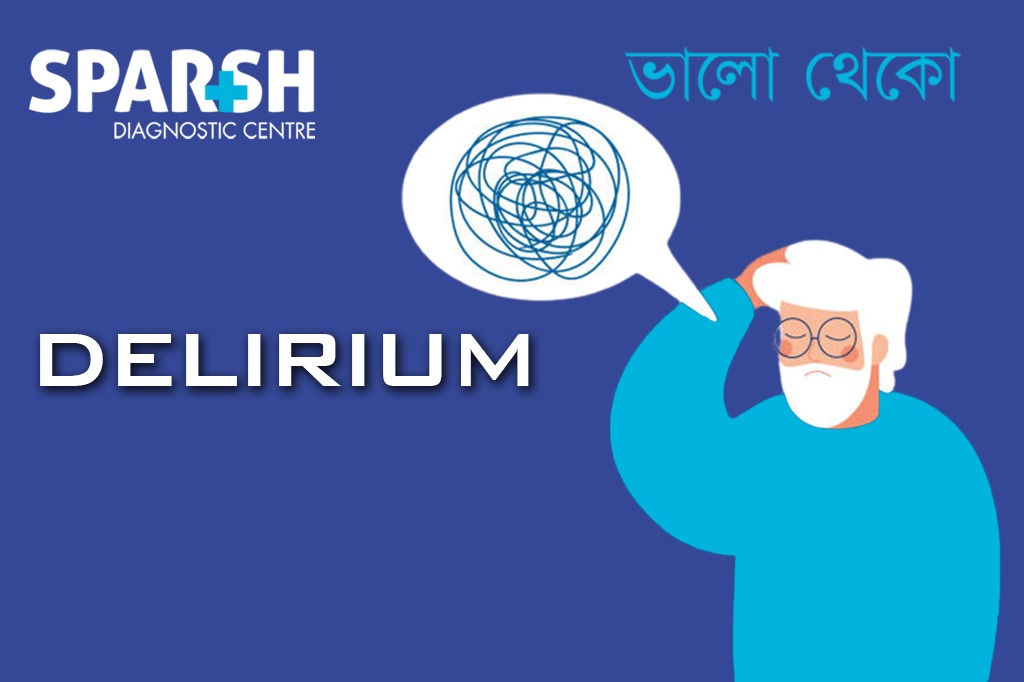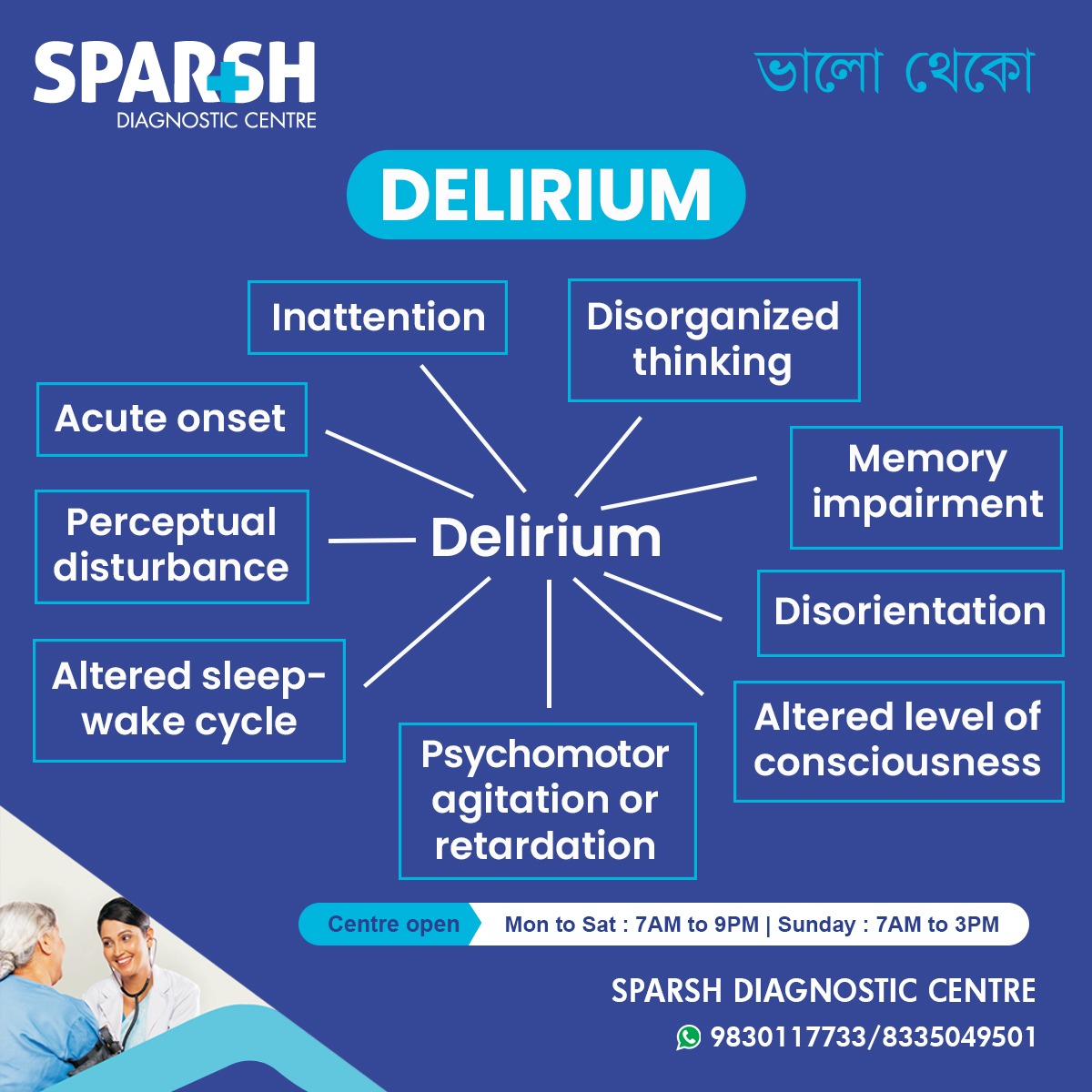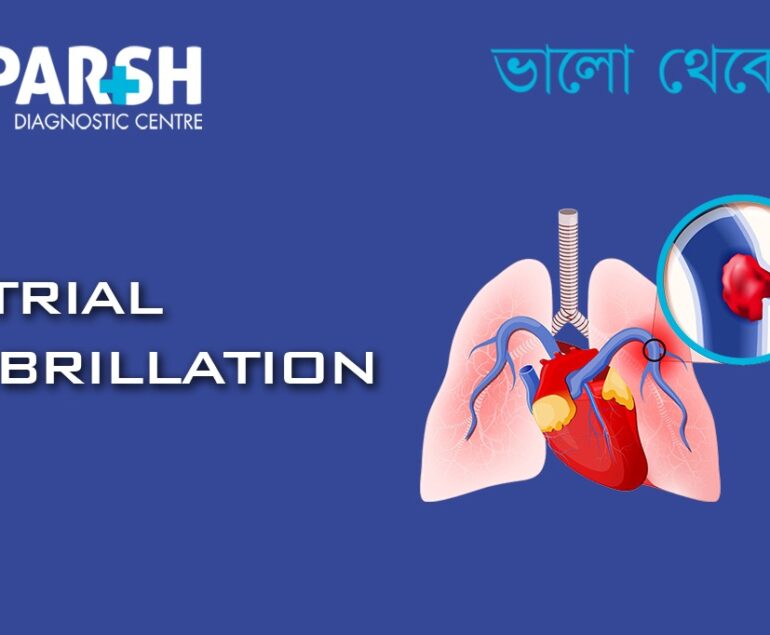Delirium is a severe neuropsychiatric syndrome that presents as a sudden change in attention, cognition, and consciousness. It is a common yet underdiagnosed condition, particularly in hospitalized patients, the elderly, and individuals with pre-existing brain conditions. Recognizing and treating delirium early can significantly reduce complications and improve outcomes.
This blog explores the definition, causes, risk factors, symptoms, diagnosis, treatment, and prevention of delirium, along with a focus on the signs highlighted in the infographic by Sparsh Diagnostic Centre.
What is Delirium?
It is an acute disturbance in mental abilities, characterized by sudden confusion, changes in attention, awareness, and behavior. Unlike dementia, which progresses gradually, delirium occurs rapidly—often within hours or days. It is typically a reversible condition if the underlying cause is identified and managed promptly.
Types of Delirium
There are three main types:
Hyperactive Delirium: Restlessness, agitation, hallucinations, rapid mood changes.
Hypoactive Delirium: Sluggishness, drowsiness, lethargy; often mistaken for depression.
Mixed Delirium: Fluctuations between hyperactive and hypoactive states.
Causes of Delirium
It can result from a variety of medical, surgical, or environmental factors. Common causes include:
Medical Causes
Infections (e.g., urinary tract infections, pneumonia)
Chronic diseases (e.g., liver or kidney failure)
Medication-Related Causes
Sedatives, narcotics, or anticholinergic drugs
Drug withdrawal (e.g., alcohol, benzodiazepines)
Polypharmacy in elderly patients
Surgical and Trauma-Related Causes
Postoperative delirium
Traumatic brain injury
ICU delirium
Environmental and Psychological Triggers
Sleep deprivation
Sudden changes in surroundings or caregivers
Risk Factors
While delirium can affect anyone, certain groups are more susceptible:
Older adults, especially those over 65
Individuals with dementia or cognitive impairment
Hospitalized or ICU patients
People undergoing major surgery
Patients with vision or hearing impairments
Those with a history of stroke or other brain disorders
Substance abuse or withdrawal history
Signs and Symptoms of Delirium
The symptoms are diverse and often fluctuate throughout the day. According to the infographic from Sparsh Diagnostic Centre, the following are key signs:
1. Acute Onset
Delirium typically appears suddenly, developing over a few hours to days. This distinguishes it from dementia, which progresses more gradually.
2. Inattention
Patients may struggle to focus, easily distracted by irrelevant stimuli. This is one of the hallmark signs and can be subtle in the early stages.
3. Disorganized Thinking
Speech may be incoherent, with illogical or irrelevant answers to questions. Thought processes become fragmented or nonsensical.
4. Memory Impairment
Short-term memory is often the most affected. Patients may not recall recent events or conversations, increasing confusion.
5. Disorientation
Confusion about time, place, and sometimes even identity is common. Patients may not know where they are or the current date.
6. Altered Level of Consciousness
Patients may swing from being hyper-alert to drowsy or unresponsive. This fluctuation is a key diagnostic clue.
7. Psychomotor Agitation or Retardation
Some patients exhibit hyperactivity (restlessness, aggression), while others appear lethargic or slow in movement and speech.
8. Altered Sleep-Wake Cycle
Delirium often disrupts normal sleep patterns. Nighttime agitation and daytime drowsiness are common.
9. Perceptual Disturbance
Hallucinations and delusions may occur, especially visual hallucinations. These can be frightening and distressing for both the patient and caregivers.
Diagnosis of Delirium
Diagnosing delirium is primarily clinical, based on history, observation, and mental status examination. Key steps include:
1. Medical History and Review of Medications
Understanding recent changes in health status, medications, or hospitalizations is crucial.
2. Mental Status Examination
Tools like the Confusion Assessment Method (CAM) are used to assess cognitive functions, including attention, orientation, memory, and perception.
3. Laboratory Tests
Blood tests, urine analysis, and imaging (like CT or MRI) may be needed to identify underlying causes such as infection, metabolic imbalance, or brain injury.
Treatment of Delirium
Effective treatment focuses on identifying and reversing the underlying cause, along with managing symptoms.
1. Medical Management
Treat infections with appropriate antibiotics
Correct electrolyte imbalances and dehydration
Adjust or discontinue problematic medications
Address hypoxia or hypoglycemia
2. Supportive Care
Ensure adequate hydration and nutrition
Maintain a calm, well-lit environment
Reorient the patient frequently using clocks, calendars, and familiar faces
Avoid physical restraints unless absolutely necessary
3. Medications (When Necessary)
Antipsychotics like haloperidol or quetiapine may be used in cases of severe agitation, but only under close supervision. Benzodiazepines are generally avoided except in alcohol withdrawal delirium.
Prognosis and Complications
Prognosis
With prompt treatment, delirium is often reversible. However, recovery can take days to weeks depending on the cause and the patient’s baseline health.
Possible Complications
Long-term cognitive impairment
Increased risk of developing dementia
Higher mortality rates, especially in elderly or critically ill patients
Extended hospital stays and increased healthcare costs
Prevention of Delirium
Preventive measures can significantly reduce the risk, especially in high-risk groups.
1. Hospital-Based Strategies
Early mobilization after surgery
Avoiding unnecessary catheterization or sedation
Regular orientation and cognitive stimulation
Ensuring use of hearing aids or glasses
2. Caregiver and Home Strategies
Monitor medications for side effects
Encourage regular hydration and nutrition
Provide a stable and familiar environment
Minimize disruptions to the sleep-wake cycle
Delirium vs. Dementia: Key Differences
| Feature | Delirium | Dementia |
|---|---|---|
| Onset | Sudden (hours to days) | Gradual (months to years) |
| Attention | Impaired | Usually normal until late |
| Consciousness | Fluctuates | Usually clear |
| Duration | Short (days to weeks) | Long-term |
| Reversibility | Often reversible | Usually not reversible |
Delirium is a medical emergency that demands immediate attention. Recognizing the signs—such as inattention, disorganized thinking, altered sleep-wake cycles, and perceptual disturbances—is vital for timely intervention. By identifying and addressing the underlying causes, most cases of delirium can be reversed, leading to improved quality of life and reduced complications.
For those caring for elderly or hospitalized individuals, awareness of delirium can make all the difference. If you suspect delirium in a loved one, consult a healthcare professional immediately.
Need Help?
If you or a loved one is experiencing sudden confusion or changes in mental status, reach out to Sparsh Diagnostic Centre for expert evaluation and care.
📞 Call/WhatsApp: 9830117733 / 8335049501
🕒 Hours: Mon to Sat: 7 AM – 9 PM | Sun: 7 AM – 3 PM
Stay aware. Stay safe. Stay well.
#BhaloTheko
Disclaimer:
No content on this site, regardless of date, should ever be used as a substitute for direct medical advice from your doctor or other qualified clinician.

![]()







[…] Changes: Severe typhoid may cause delirium or confusion, unlike […]